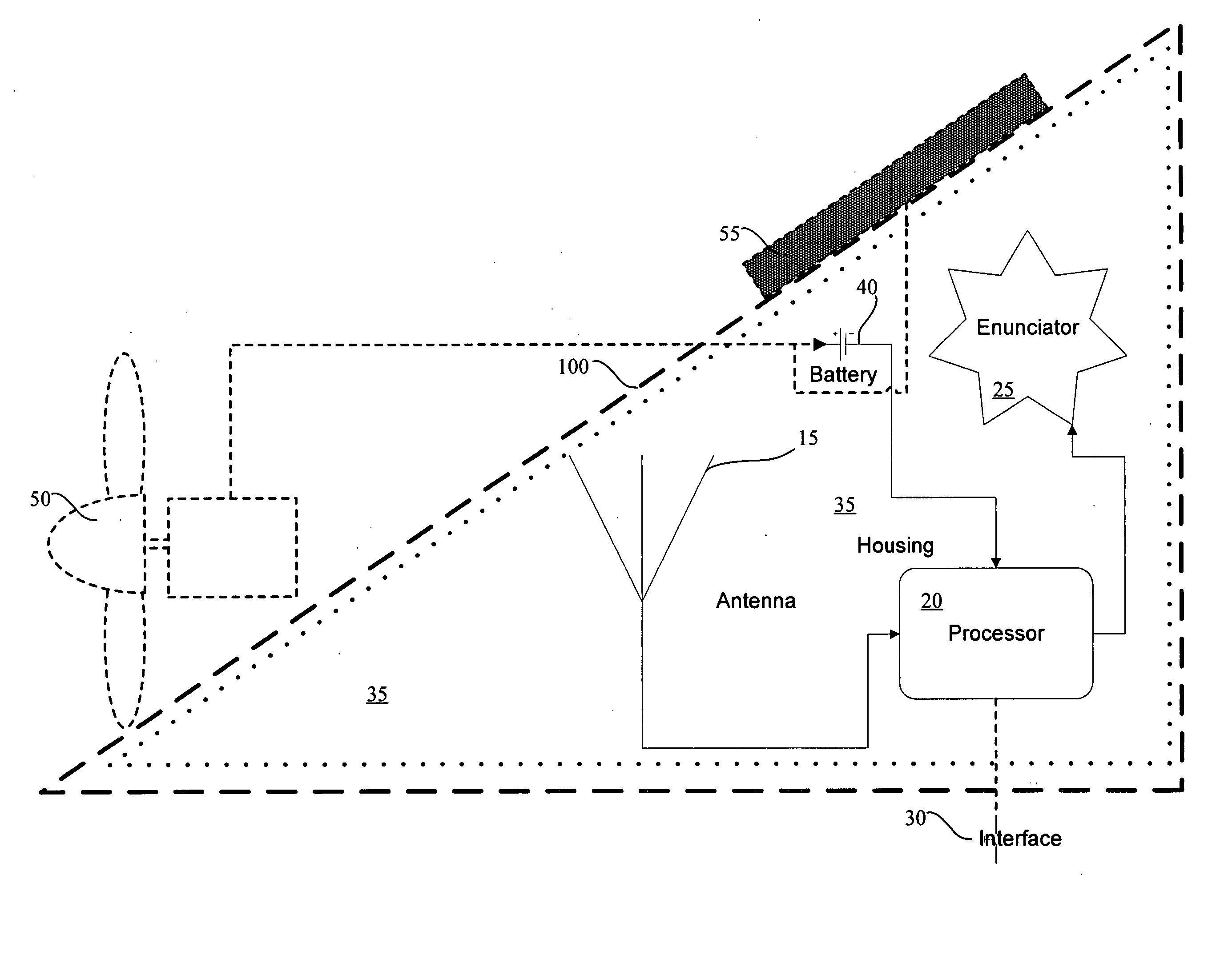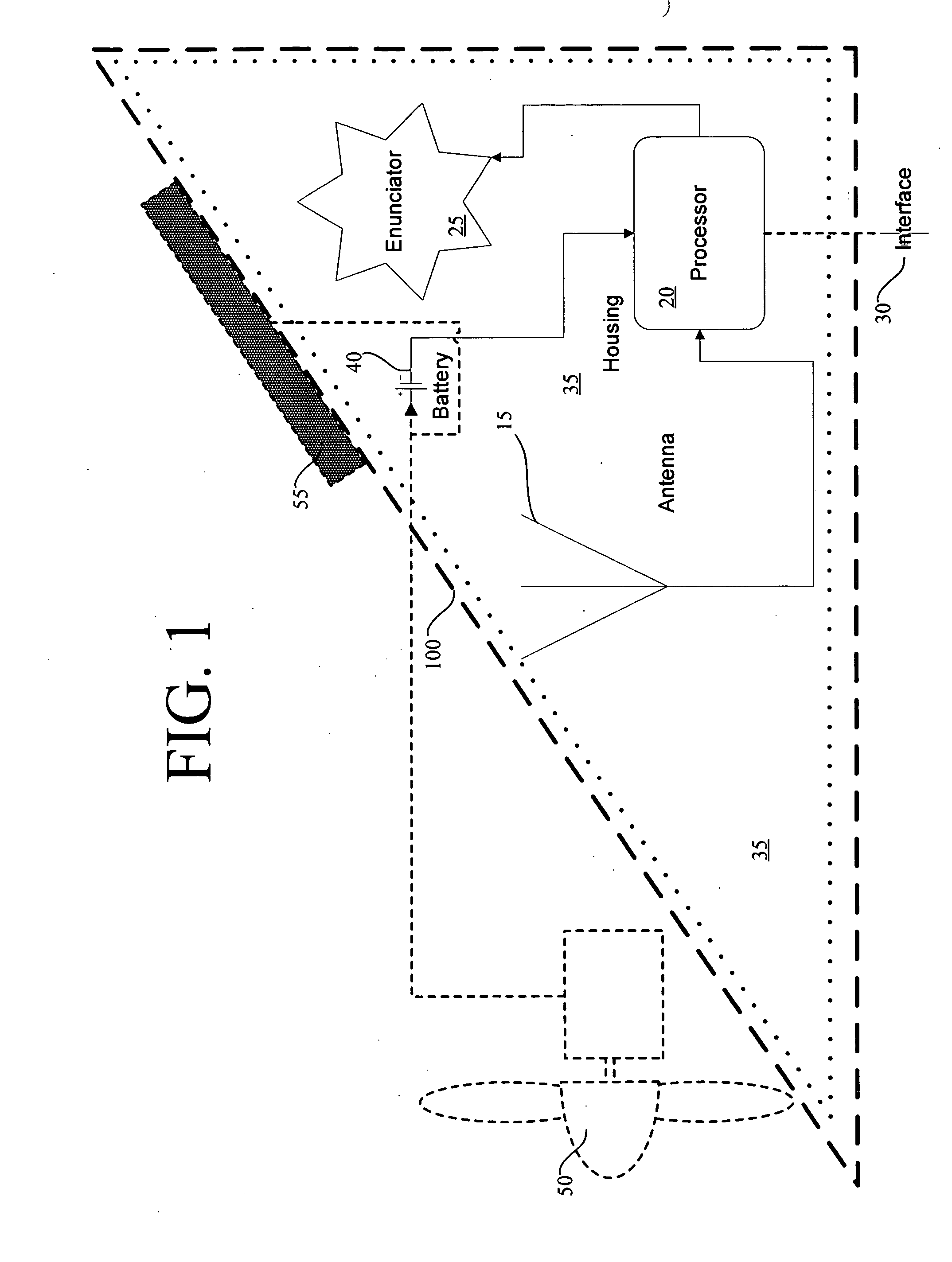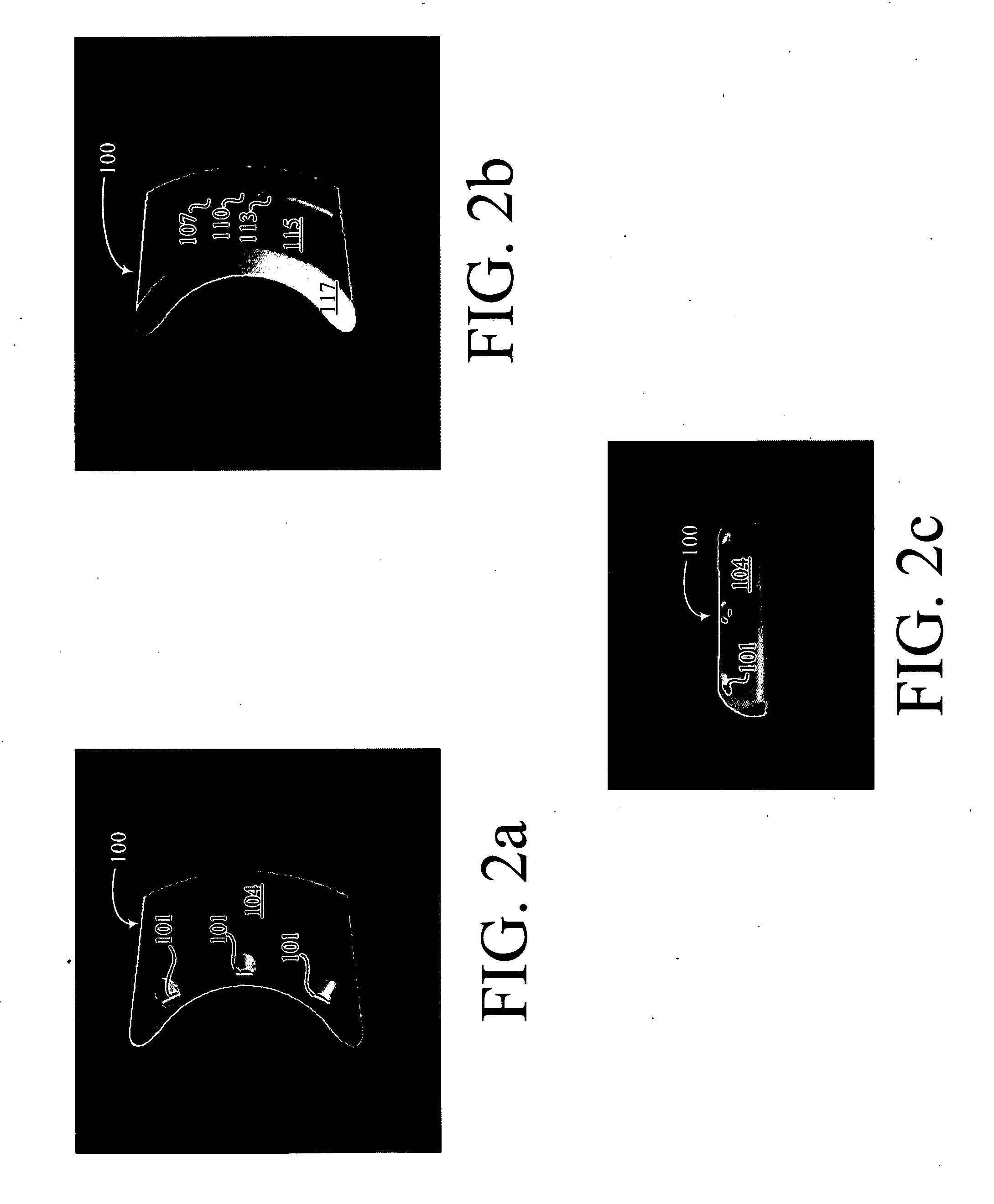Radar detection helmet visor
a radar detection and helmet technology, applied in wave based measurement systems, electric devices, instruments, etc., can solve the problems of not being accepted by motorcycle riders, radar detection helmets cannot allow movement of detection mechanisms, and driving tasks that do not allow effective monitoring of visual indicators
- Summary
- Abstract
- Description
- Claims
- Application Information
AI Technical Summary
Benefits of technology
Problems solved by technology
Method used
Image
Examples
Embodiment Construction
[0025] A radar detection device, radar detection device container, and a method includes a housing configured to attach to a motorcycle helmet to shield eyes of a motorcycle helmet wearer from overhead sunshine. The housing defines a void configured to house a radar detection circuit. The circuit is configured to reside in the void and includes an antenna. The antenna is configured to receive an electromagnetic signal. The electromagnetic signal is one of the group consisting of radar signals having wavelengths in the X-band, K-band and Ka-Band and lidar signals and to generate an operative signal based upon receipt of the electromagnetic signal. A processor is configured to receive the operative signal from the antenna according to the electromagnetic signal received at the antenna.
[0026] Referring to FIG. 1, a radar detection device visor includes a housing 10 configured to attach to a motorcycle helmet to shield eyes of a motorcycle helmet wearer from overhead sunshine and defin...
PUM
 Login to View More
Login to View More Abstract
Description
Claims
Application Information
 Login to View More
Login to View More - R&D
- Intellectual Property
- Life Sciences
- Materials
- Tech Scout
- Unparalleled Data Quality
- Higher Quality Content
- 60% Fewer Hallucinations
Browse by: Latest US Patents, China's latest patents, Technical Efficacy Thesaurus, Application Domain, Technology Topic, Popular Technical Reports.
© 2025 PatSnap. All rights reserved.Legal|Privacy policy|Modern Slavery Act Transparency Statement|Sitemap|About US| Contact US: help@patsnap.com



